Hybrid Vehicles
Hybrids, EVs, and the City Environment

With the big push for clean air and protecting the environment, running a new hybrid vehicle is one way to make the gradual change from fossil fuels to electric more affordable and realistic as we head into a future of EVs.
A gradual change is key, so that everyone can adjust their budgets and business direction accordingly. And making the change gradual ensures that EVs can become more affordable to the masses. Have you heard of the ‘trickle-down effect’? This term refers to the reality of fashion trends flowing from the wealthy (e.g., politicians, mayors, doctors, directors, engineers etc.) to the less well-off or the working class (e.g., factory hands, beneficiaries, shop assistants, cleaners, farm workers, etc.) in society. This trickle-down phenomenon can be related to any new consumer product, especially when these products are first introduced into the market.
At the product’s initial introduction into the marketplace, it is costly and only affordable to the wealthy, but, as the product matures, and as time goes on, its price begins to fall so that it might become more widely affordable and thus adopted by the general public and the working class. One would assume that pure EVs will follow this kind of trend.
Right now, EVs are expensive to purchase new, especially when you want to have one of the EVs with all the status (e.g., Tesla, Porsche, Mercedes Benz). There are some cheaper options like the MG ZS EV, Hyundai IONIQ electric, the Nissan Leaf, and the Hyundai Kona electric. These cars can generally be had for less than $60k.
Currently, owning and operating a 100% EV would be an ideal option if you just wanted to hop between addresses inside the city boundary or maybe commute short distances to and from the urban jungle. However, throw in some intercity travel or long country drives, and the EV is simply left wanting. I’m aware that EV manufacturers are working hard to change this, to make their EVs capable of travelling much longer distances between recharges, as well as making the recharge time much quicker than it commonly is. As it stands today, Australia’s recharging infrastructure is in its infancy, and beyond the city boundary, even inside, it still has a long way to go before becoming seamless and brief.
If you live in and mostly travel inside one of our lovely Australian cities, owning or operating a vehicle that is capable of running on electric power for all or at least some of the time (more depending on you commute or travel patterns) would surely be an option if you aren’t doing so already. This would instantly help to improve the air quality of the congested city environment.
Who wouldn’t want to enjoy breathing cleaner air inside a city’s boundaries? We all would, right? But I can’t afford an EV because (a) it’s not practical and (b) you can’t afford one? If you relate to either of these truths, then you aren’t alone and are currently in the majority. So, what about a Hybrid then? Right now, hybrid vehicles do make a lot of sense. They are able to use their small electric motor for 20–30 km of inner city travel, thus making the city air cleaner and the environment better for all city dwellers and workers. However, when the commute includes distances beyond the city boundary, the petrol motor will happily take over transport duties and to get you where you want to go, recharging the electric motor’s battery in the process.
Of course, a bicycle or even walking is another option for inner city travel, particularly when it isn’t raining. If you are wanting a Hybrid vehicle or even an EV, then do have a look at some of our Hybrid and EV reviews or talk to some of our sales staff to see if there is a likable and affordable option out there for you.
Reasonably Priced Hybrid Vehicles (MG to Z)
In-between stages can sometimes get tricky. The next set of sit-ups before truly hitting your peak fitness regime. That gap year before study, or the six months prior to the new job contract starting. What about the EV world? We’re not capable of running a full fleet of EV cars yet, but maybe there’s an in-between vehicle that ticks all the right boxes before we go fully electric.
The truth is that the new hybrid vehicles are the best cars for this moment in time. They deliver the very best low fuel consumption figures and will also try to run pure electric as much of the time as is practical or possible.
Hybrids are great vehicles, usually well-priced, thus perfect for softening the blow to the wallet – there are some hideously expensive EVs available. Most desirable new EVs have price tags that, for most of us, will be well beyond our budget. So what hybrid vehicles are on the market for reasonable money? How much will they set you back when you buy new? And what sort of fuel consumption can you expect? Let’s have a look and see (MG to Toyota)…
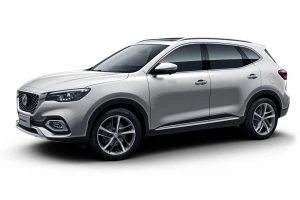
MG HS Plus EV SUV
Yes, a new and very fuel efficient Hybrid for less than $50k is possible, thanks to the snazzy MG HS Plus EV SUV. Nice to drive, comfortable, and with roomy interiors, loaded with technology, and five-star safe, these are a great hybrid buy. The MG HS Essence-spec plug-in hybrid joined the range in 2021 and uses a 119 kW/250 Nm 1.5-litre Turbo four driving the front wheels through a 7-speed dual-clutch gearbox. It boasts a strong presence among class leaders that include the Toyota RAV4, Mazda CX-5 and Nissan X-Trail. It comes with 5-star safety technology that includes autonomous emergency braking with pedestrian avoidance and satellite navigation as standard. MG says it takes about 7 seconds for the 0-100 dash, while returning a fuel efficiency that can be as low as 1.7 litres/100 km or more commonly up to 5.7 litres/100 km.

MINI Countryman Cooper SE Classic SUV
The Countryman Cooper SE Classic is a cute three-cylinder plug-in hybrid with electrically-assisted AWD. BMW indicates a combined cycle as low as 2.4 litres/100 km but may look more like 4.5 litres/100 km for most of the time. Combining a 1.5-litre Turbo 3-cylinder ULP petrol (100 kW/220 Nm) and a 7.6 kWh lithium-ion plug-in battery, this combined system equates to an output of 165 kW of power and 385 Nm of torque. The small MINI sees off the 0-100kmh sprint in 6.8 seconds and is a lot of fun to drive. The MINI Countryman’s roomy interior is backed up by 450 litres of luggage space behind the back seats, growing to 1275 litres if the seats are folded down.
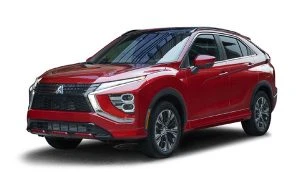
Mitsubishi Eclipse Cross PHEV ES
From around $51k you can get one of these new. The 2022 Mitsubishi Eclipse Cross PHEV ES is a very stylish small SUV with very low running costs. Aspire and Exceed models are also available. Comfortable and loaded with tech and safety, the Mitsubishi Eclipse Cross PHEV makes a lot of sense. Even the top of the range Exceed with all of the bells and whistles can be bought for under $60k. Mitsubishi indicates as low as 1.9 litres/100 km is possible, though real world figure of 3.7–4.0 litres/ 100 km is still impressively low in the real world. Boot space is around 350 litres, and 0-100 km/h takes about 10.5 seconds.
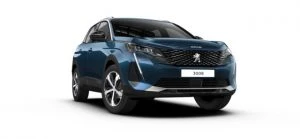
Peugeot 3008 GT Sport Plug-in Hybrid AWD SUV
For less than $90k you can have one of these very stylish hybrids. Boasting a 1.6-litre Turbo ULP engine and electric power that combines to a maximum of 222 kW, this sporty SUV uses an 8-speed automatic. Thanks to twin electric motors driven by a 13.2 kWh lithium-ion battery pack, the Peugeot 3008 PHEV enables zero-emissions driving for up to 60km. Its 222 kW power output and a 6.5-second 0-100 km/h acceleration time makes this one of the fastest SUVs in its class. It is also 4×4 capable, making it a highly desirable vehicle for undertaking light off-road terrain. Gorgeous full-grain Nappa leather-appointed seats with grey stitching, nicely-integrated twin digital screens (a 10.0-inch central touch-screen with satellite navigation and a 12.3-inch driver display), real world fuel efficiency likely be around 5–5.5 litres/100 km (but much less than this is possible), and you have yourself quite a vehicle. Peugeot reckons the 3008 PHEV can achieve a combined fuel consumption figure of 1.6 litres/100 km with CO2 emissions of 36.4g/km. Boot space is 395 litres.
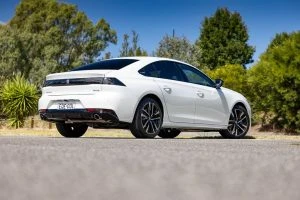
Peugeot 508 GT Plug-in Hybrid
From around $84k one of these extremely stylish cars can be yours. Its petrol-electric hybrid powertrain allows the svelte sedan to drive up to 55 km (WLTP) in silence, by switching off the combustion engine and using only its electric motor. It’s hard not to be impressed with the car’s looks and style. Inside, the leather seats, the dashboard design, the sporty cockpit layout, and the sheer attention to detail is very impressive. A 12.3-inch iCockpit digital driver’s display, a 10.0-inch central touch-screen, a 10-speaker sound system, dual-zone automatic climate control, five-star safety, it’s all there! 0-100 km/h takes around 8.2 seconds, while the Plug-in Hybrid system uses a 1.6-litre turbo-petrol four-cylinder engine developing 133 kW at 6000 rpm and 300 Nm at 3000 rpm to get the job done. The official combined-cycle fuel consumption figure is 1.8 litres/ 100 km, but to achieve that would require frequent charging – something that’s not always possible in the real world. Expect around 5.0 to 6.5 litres/100 km combined. Boot space is 487 litres.
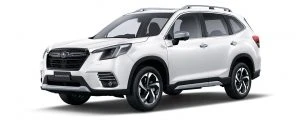
Subaru Forester Hybrid
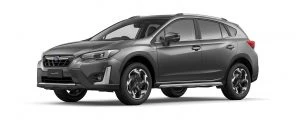
Subaru XV Hybrid
The fifth generation of Subaru’s mid-size, all-AWD Forester SUV was updated in late 2021 with a new look, plus refinements to steering and suspension and a revised instrument panel. The smaller XV Hatch also uses similar tech. Expect around 6-7 litres/100 km for the 2.0-litre boxer-based mild hybrid powerplants. Off-road is no problems at all for the Forester or XV and safety is off the top shelf. All Foresters and XV Hybrids get active cruise control, blind-spot monitors, lane-change assist, “active” LED headlights and rear cross traffic alert. The Forester offers truly generous passenger space and luggage capacity (422 litres expanding to 1768 litres with rear seats folded). The XV has 340 litres behind the rear seats. Both are nice to drive adventure seekers.
Toyota Hybrids
Almost every model on the Toyota showroom floor can be a hybrid. There are so many that I’ll list them all here in picture form.

Toyota C-HR Hybrid SUV from $42k.
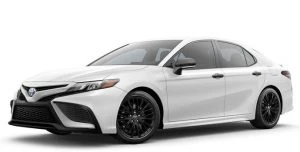
Toyota Camry Hybrid Sedan between $38-52k.
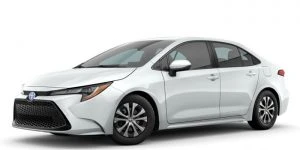
Toyota Corolla Hatch and Sedan between $32-40k.
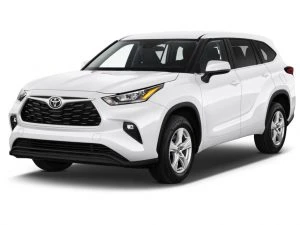
Toyota Kluger SUV between $60-83k.
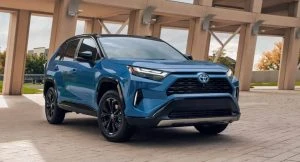
Toyota RAV4 Hybrid
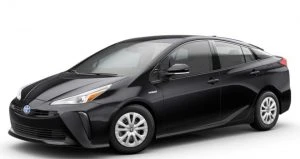
Toyota Prius between $43-51k.
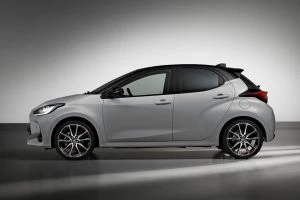
Toyota Yaris Hybrid
These are truly excellent hybrid vehicles, and, if you don’t know where to start, Toyota is a great place. Reliability, practicality, some of the best hybrid economy figures (usually very achievable: 3.5 to 5.5 litres/100 km), and excellent 5-star safety are all reasons why Toyota Hybrids are so good. They are also very competitively priced right across the board from the little Yaris Hatch to the larger Camry Sedan or Kluger SUV. Get ready to be impressed.
Be an in-betweener and gain some of the Hybrid benefits.
Reasonably Priced Hybrid Vehicles (Kia-Merc)
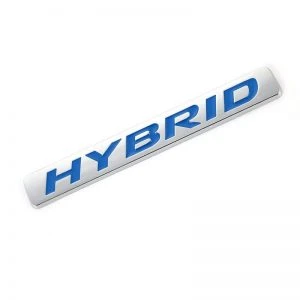 In-between stages can sometimes get tricky. The next set of sit-ups before truly hitting your peak fitness regime. That gap year before study, or the six months prior to the new job contract starting. What about the EV world? We’re not capable of running a full fleet of EV cars yet, but maybe there’s an in-between vehicle that ticks all the right boxes before we go fully electric.
In-between stages can sometimes get tricky. The next set of sit-ups before truly hitting your peak fitness regime. That gap year before study, or the six months prior to the new job contract starting. What about the EV world? We’re not capable of running a full fleet of EV cars yet, but maybe there’s an in-between vehicle that ticks all the right boxes before we go fully electric.
The truth is that the new hybrid vehicles are the best cars for this moment in time. They deliver the very best low fuel consumption figures and will also try to run pure electric as much of the time as is practical or possible.
Hybrids are great vehicles, usually well-priced, thus perfect for softening the blow to the wallet – there are some hideously expensive EVs available. Most desirable new EVs have price tags that, for most of us, will be well beyond our budget. So what hybrid vehicles are on the market for reasonable money? How much will they set you back when you buy new? And what sort of fuel consumption can you expect? Let’s have a look and see (Kia-Merc)…

Kia Niro Hybrid S
The Kia Niro comes in regular hybrid, plug-in PHEV hybrid, and also pure electric (EV) form. Hybrid variants of this small SUV use a 77 kW/147 Nm 1.6-litre ULP engine that is mated to a 44.5 kW electric motor. The PHEV version can run in EV mode for around 58 km, while the pure EV model has a 150 kW/395 Nm motor and a 455 km WLTP (World harmonised Light vehicle Testing Procedure) range. All variants are available in regular or Sport form – the Sport model adding more technology and luxury such as Apple CarPlay/Android Auto, climate control and part-leather seat trim, as well as extra safety in the form of blind spot monitoring, rear parking sensors and rear cross traffic alert. Drive away in one of these from around $45k. Boot space is 382 litres for the regular hybrid, while the PHEV drops to 324 litres.
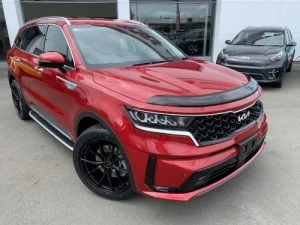
Kia Sorento HEV GT-Line and PHEV GT-Line
Drive away from in a HEV Sorento for around $73k or a PHEV Sorento for around $88k. Being a spacious SUV, the Sorento is a very practical companion for the family. The HEV model runs with a 1.6 litre Turbo engine and an electric motor that puts out a healthy combine output of 169kW. The 6-speed auto is smooth and well-mapped. Expect a combined fuel consumption of around 5.5 litres/100 km. In PHEV form, the Sorento has 195 kW, Kia indicating a combined fuel consumption of 1.6 litres/100 km is possible, though it will likely be more than this in a real world commute. The 7-seat Kia Sorento SUV won the 2021 car sales Best Family SUV award. Festooned with sensors, cameras and digital screens, it can even park itself without anyone inside. Autonomous emergency braking, adaptive cruise control, blind-spot monitoring and rear cross-traffic collision avoidance are all standard. The roomy cabin is enhanced by a boot that has over 600 litres, and when all-seats are folded, a whopping 2000 litres is possible.
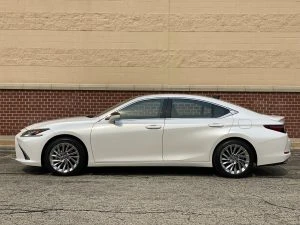
Lexus ES 300h
One of the most luxurious hybrid sedans you can buy – let alone hybrid vehicles on the market – for under $70k new for the Luxury version or $90k new for the Sports Luxury version, this stylish car can be yours. Toyota indicate that a combined city/highway run can be as low as 4.8 litres/100 km. A combined 160 kW of power and five-star safety, what more could you want? Boot space is 454 litres, and the 0-100 km/h takes around 8.5 seconds.

Lexus UX 250h SUV
The company’s first EV, the UX 300e has a 150 kW/300 Nm FWD electric powertrain and a 54.3 kW/h battery pack, the Lexus UX 300e claims a 360 km range. But it is the Lexus UX 250h SUV Hybrid with the 2.0-litre 131 kW ULP regular hybrid engine that we’re particularly interested in here, which is available in Luxury, Crafted Edition, Sports Luxury and F Sport guise. The Luxury Lexus UX 250h version can be had for well under $60k, a very reasonably-priced luxury machine all things considered. These are five-star safe, FWD, extremely reliable, and very comfortable to drive. Toyota indicate around 4.5 litres/100 km for a combined highway/city cycle for hybrid versions. Boot space is 438 litres.
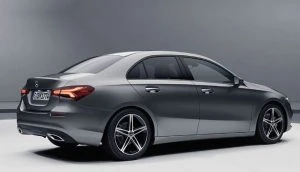
Mercedes Benz A250e Sedan and Hatch
Immensely low running costs can be had for this plug-in hybrid. If everything suits the PHEV commute, then Mercedes Benz indicates you could see as low as 1.6 litres/100 km on a combined cycle. Luxurious, safe, and fun to drive, these can be had for under $80k. A 1.3-litre Turbo ULP engine with a plug-in hybrid combo that produces 160 kW max through its smooth 8-speed automatic FWD system. The 2022 A-Class A250e runs the 0-100 km/h dash in less than 7 seconds, providing well for passengers and their luggage, driving with the poise and comfort that are hallmarks of the brand. Safety, quality, comfort, and premium equipment levels are all up to expected Mercedes Benz standards. Boot space is 315 litres for the Sedan and 310 litres for the Hatch.
Be an in-betweener and gain some of the benefits.
Reasonably Priced Hybrid Vehicles (A-H)

In-between stages can sometimes get tricky. The next set of sit-ups before truly hitting your peak fitness regime. That gap year before study, or the six months prior to the new job contract starting. What about the EV world? We’re not capable of running a full fleet of EV cars yet, but maybe there’s an in-between vehicle that ticks all the right boxes before we go fully electric.
The truth is that the new hybrid vehicles are the best cars for this moment in time. They deliver the very best low fuel consumption figures and will also try to run pure electric as much of the time as is practical or possible.
Hybrids are great vehicles, usually well-priced, thus perfect for softening the blow to the wallet – there are some hideously expensive EVs available. Most desirable new EVs have price tags that, for most of us, will be well beyond our budget. So what hybrid vehicles are on the market for reasonable money? How much will they set you back when you buy new? And what sort of fuel consumption can you expect? Let’s have a look and see…
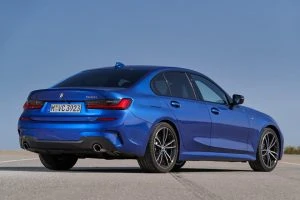
BMW 330e Sedan Hybrid Sedan
Drive away from around $85k in your new BMW 330e Hybrid sedan, where a claimed combined fuel consumption of around 5.6 litres/100 km combined with 215 kW provides plenty of spirited driving (0-100 km/h in around 6 seconds). Comfort, safety and all the new technology is on-board this neat 3 Series Hybrid Sedan package. 375 litres of boot space is present.
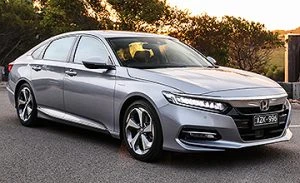
Honda Accord VTi-LX Hybrid Sedan
Drive away in a new Honda Accord Hybrid for around $61k, and you get a wonderful 2.0-litre petrol and electronic combo that serves up 158 kW of power running through a 1-speed CVT FWD set-up. This is a very comfortable car with plenty of space in the cabin, and you get all the latest technology and safety. It is fun to drive, with the 0-100 km/h sprint taking around 8 seconds. Honda indicates that you can expect around 5.0 litres/100 km for a combined fuel consumption figure. 473 litres of boot space is present.

Honda HR-V e:HEV L
Wanting a new small SUV with Hybrid technology? Then Honda’s little HR-V is a beauty. Drive away in a new Honda HR-V e from around $45k, and it will boast a smooth 1.5-litre petrol and electronic combo that serves up 96 kW of power running through a 1-speed CVT FWD set-up. Honda suggests we can expect a combined fuel consumption of around 4.3 litres/100 km. 319 litres of boot space is present.
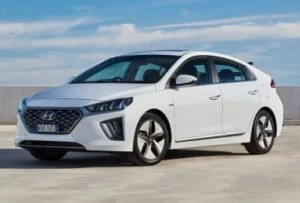
Hyundai IONIQ Hybrid Premium Fastback
Drive away from around $46k. With its neat little Fastback design, the 1.6-litre ULP engine combines with a small electric motor to put out a sprightly 104 kW of power. This Hybrid set-up runs a more conventional 6-speed automatic FWD, and it is a smooth, comfortable vehicle to drive. Undercutting competitors such as the Toyota Prius and Renault Zoe, Hyundai’s IONIQ comes with plenty of premium features like autonomous emergency braking, an 8-year battery warranty and an attractive capped-price servicing deal. The regular hybrid version is quoted at having a fuel consumption figure as low as 3.4 litres/100 km, while the plug-in version was quoted at an astonishing 1.1 litres/100 km. Real world figures will be a bit more, I’m sure, but. Boot space is 443 litres.
Be an in-betweener and gain some of the benefits. Take a look at the next blog list of Hybrid vehicles available (Kia-Merc).